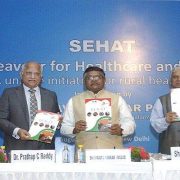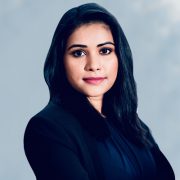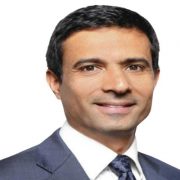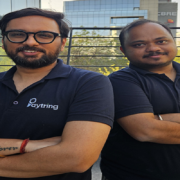In view of understanding the cutting edge research that Indian academies have undertaken, Nikhil Kashyap, Correspondent from IndiaTechnologyNews met with the Professors at IISC, Bangalore. Excerpts on the journey of the projects undertaken at universities and their engagement methods with entrepreneurs.
Part 2 of 2….
In our previous article, we looked at cutting edge research that Indian academies are involved in, and the challenges unique to the context of our country. However, the journey for development through technology cannot by undertaken at university alone. Outside traditional models of government financing through entities like DEITY, research is being funded through licensing by corporates. But simply pumping financial resources into academia is not the end of all issues.
Much of the research that is conducted in India, is bound by sustainability considerations (an example of which is discussed in the previous article). Covering rural areas under national broadband plans, could be one transformative step towards lifting connectivity considerations. In areas where complete coverage is not possible, organizations like ISRO can contribute towards establishing VSAT hotspots in central areas like Panchayats or market areas. Even time budgeted releases of internet connectivity could go a long way in handling last mile connectivity. An exemplification of the same is a command centre at the IISC which, through a VSAT backhaul link, pushes location centric information on water table readings to the corresponding villages. This information is broadcasted at local Wifi stations for a couple of hours a day, so that the people of the village can receive the data and adjust their pumps accordingly. Hereby, data links can be provided for limited time slots in much the same way that power or water is released.
Another important puzzle piece, is transparency of available data. Consider location based information collected through ISRO satellites. Information of this nature is so tightly bound by bureaucratic procedures, that one particular IISC professor describes the difficulty of procuring it as ‘pulling teeth’! The argument stands to be made that since this information is collected through tax payer rupees, it should have unrestricted access, so long as it does not compromise national security. Similarly updated data on traffic signals, waterways and sewage could be invaluable in designing apps for smart city. Collection and opening up of up-to-date digitized data could provide a major stimulus for the private sector, with all its start-ups, to start thinking in these directions. One needs to look no further than the open source community and the wonders they have produced, for validation of the power of accessible data.
Traditionally, one of the largest contributors, and beneficiaries, of open source work has been the student community. It is impossible not to shed a tear, when one takes into account the student body of our degree factories, masquerading as establishments of higher education. Inane does not even begin to describe the work done at undergrad level. While the responsibility for this sorry state of affairs cannot be attributed to a single source, universities and governments could be doing more to spur the youth’s imagination. Nationwide competitions and tech festivals with interesting problem statements might just be the key to igniting the fire that lies dormant within our students.
On a more positive note, one of the aspects we seem to be getting right is the agenda of research itself. Naturally as citizens, we wouldn’t want our universities to be hijacked by corporate interest. This tends be a fine line to tread, considering sponsorship models and the fact that some corporates add genuine value in terms of scaling up technology to mass audiences. However, the Robert Bosch Centre defines its own research agenda by identifying pain points in society. To do so, it consults DEITY policy documents and attends brainstorming sessions organized in IoT forums. A validation of the same is how closely the centre’s work matches that of cutting edge start-ups in the same domain. The centre also has consulting ties with major companies like Bosch, Ericsson, Tata etc, without actually maintaining financial connections.
The opposite school of thought is that alignment with corporate interest is not necessarily so terrible. Researchers and academics do have a tendency to lose themselves building floating castles with so called ‘blue sky research’. Highly experimental types of research no doubt have their place; without which, we wouldn’t have break through inventions. However, it also true that universities owe real tangible contribution to society, and alignment with corporate interest automatically serves to temper an insatiable imagination. Overall, like many important tasks, defining research agendas tend to be a job of creating a fine balance.
The final jigsaw piece is the entrepreneur. Outside traditional models, the Robert Bosch Centre has a couple of methods of engagement with entrepreneurs. The first is called ‘Entrepreneurs in Residence’, wherein the centre admits select individuals facing specific technical challenges and works in tandem with them for a set duration, in exchange of a licensing fee. The centre is also engaged in mentoring entrepreneurs from other forums such as IEEE and NASSCOM 10k start-ups. Additionally, the centre is more interested in entrepreneurs with established market experience and relevant contacts. So to all the recent college graduates reading this article, unfortunately you’re going to have get a job and prove yourself before bringing your ideas to the country’s finest minds!
Bureau : itnbureau@gmail.com
Part 2 of 2








